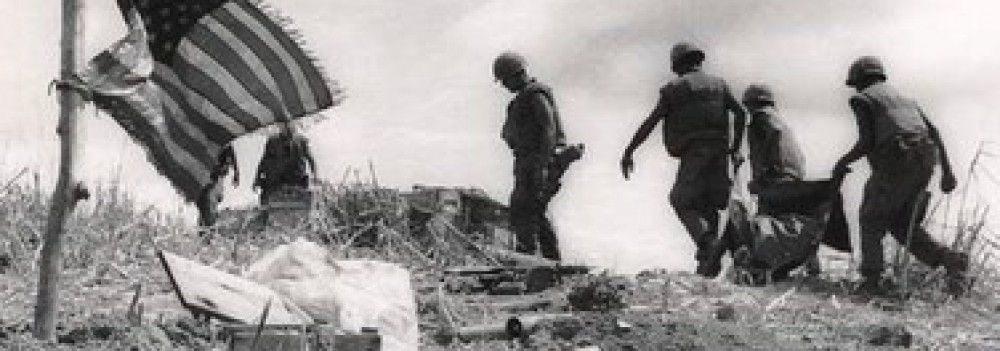Medical/Dental Affairs
Section IX
A. The daily average number of patients seen at the Battalion Aid Station (BAS) was 21.1. Of these, 24 were admitted to the ward for further treatment and /or observation. Thirty-three were referred to Company B, 3rd Medical Battalion; thirteen of these being admitted for further treatment. Dental referrals numbered 26.
B. Prevalent and significant diseases encountered, with the rate of incidence, are as follows:
1. Bronchitis – 01
2. Diarrhea, acute – 07
3. Respiratory, infection, acute – 03
4. Gastroenteritis, acute – 04
5. Gonorrhea – 07*
6. Urethritis, venereal – 03*
· Contacted while on R&R
C. Emergency situations encountered, and this treatment rendered are as follows:
1. L/Cpl L. L. Scott, 2086070, USMC, H&S Company was carried into BAS by other Marines at approximately 2015 on 24 December in a state of severe agitation and suffering from hallucinations. Thorazine, 50mg, I.V. was administered, and the patient was observed for 45 minutes. He was then returned to his billeting area with the recommendation that he be kept under observation for signs of vomiting. At approximately 1330, 25 December SCOTT was again bought to BAS at which time he was convulsing and a contusion over the right temporal region was noted. He was immediately transferred to Company B, 3rd Medical Battalion for further treatment and observation.
D. The administrative work is hampered by the lack of a typewriter and a shortage of service record forms. Medical supplies are being received though not in sufficient quantity. A small amount of suture material was received during this period, but depletion of these items is anticipated before resupply is accomplished.
E. The total number of inoculations administered during the month was 158. Serums most commonly used were Smallpox, Typhoid, and Gamma Globulin.
F. During the month, MEDCAP treated approximately 1700 civilians in the following villages: An Hai, Trung Toan, Sam Lin, Hoa Tong, Hoe Trung and Tan Tong. The most common diseases encountered were dermatological types (ulcerated lesions), minor respiratory disorders and gastrointestinal disorders. Compared with previous months the total number of patients is decreasing. Sanitation conditions in all villages is primitive but some progress is being made.
This page last corrected 18 September 2011
